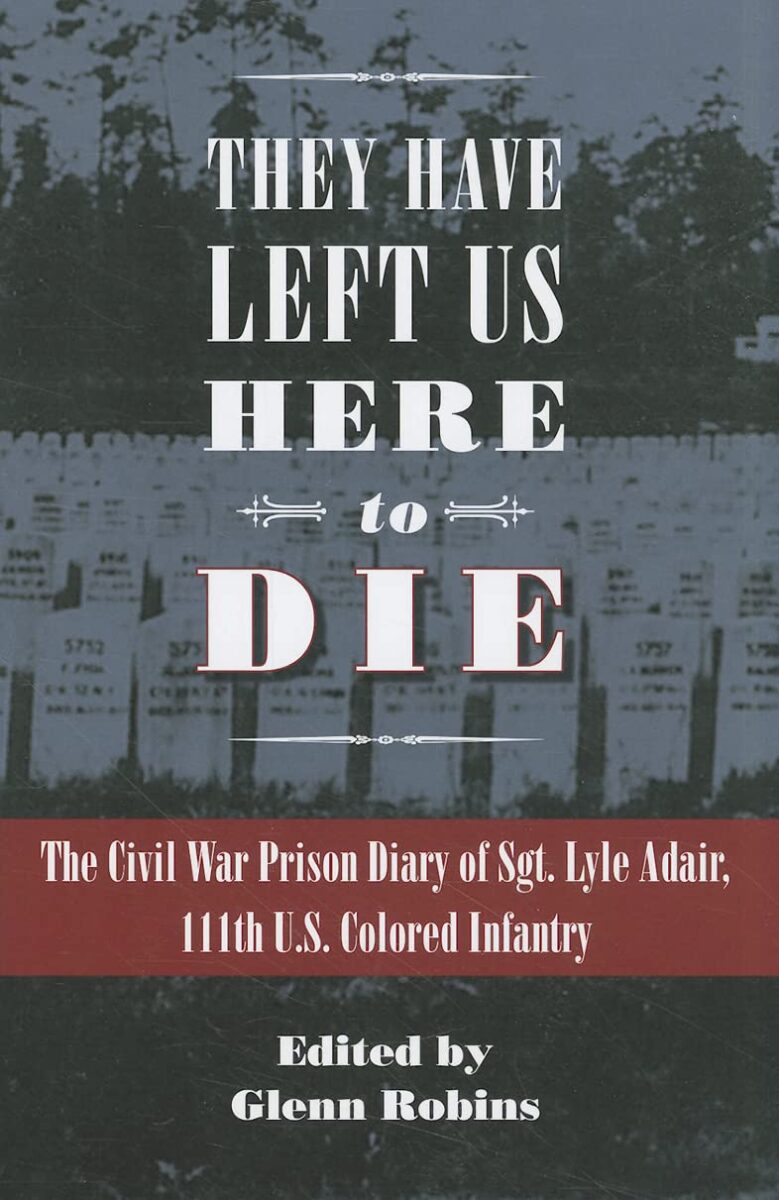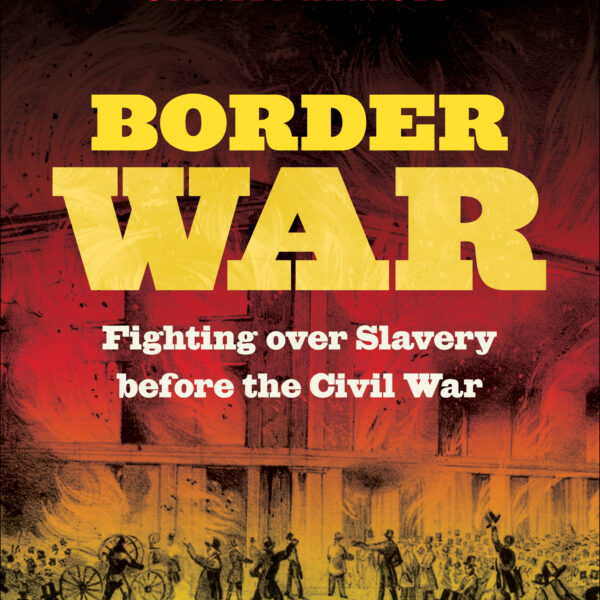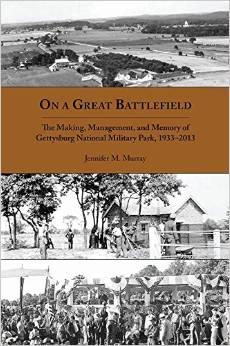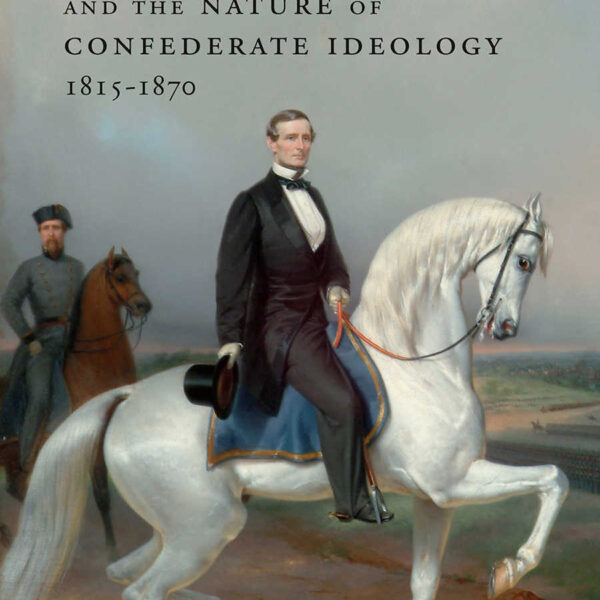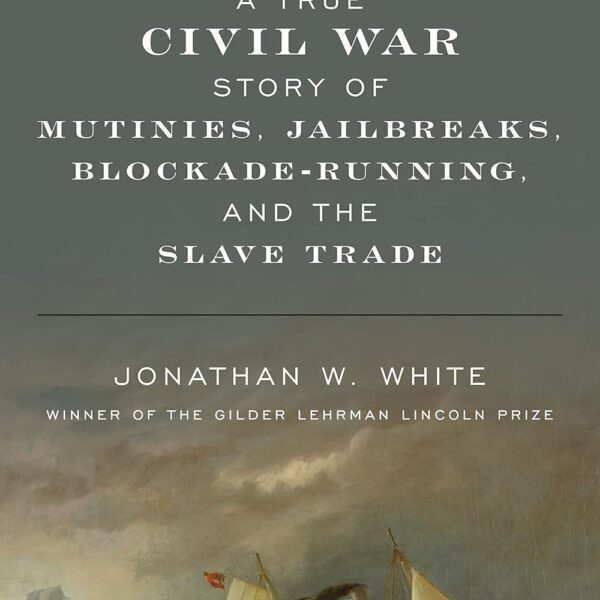Glen Robins’ transcription and analysis of Sargent Lyle G. Adair’s prison diary provides insight into the Civil War prison camp experience. In They Have Left Us Here to Die, Robins uses Sgt. Adair’s experience as a lens to investigate the broader framework of the Confederate prison camp network during the last year of the war. Robins contextualizes Adair’s experience within much secondary literature, particularly related to the experience of the common soldier, prison camps, and the Confederate military response to General William Tecumseh Sherman’s march through Georgia. Similarly, Robins applies Adair’s experience to the seven stages of captivity outlined in Robert Doyle’s Voices from Captivity (1994). In addition to engaging the larger narrative, Robins uses anecdotal footnotes in order to compare Adair’s writings to prison letters and diaries of other Union soldiers. Most significantly, because Sgt. Adair was a white officer in command of a black unit, the 111th United States Colored Infantry (USCI), Robins depicts the cultural, social, and political backlash and segregation Adair experienced from southern civilians, Confederate soldiers, and his Union comrades.
Robins places Adair’s unique position as an officer in a black regiment amongst the larger issues of contraband and anti-slavery sentiment within the Union ranks. Initially, Sgt. Adair volunteered in summer 1861 with the 61st Ohio, but during winter 1864, accepted reassignment as an enlistment officer with the 111th USCI. By looking at Adair’s early military experience and willingness to serve in a black regiment, Robins argues that Adair’s anti-slavery ideology serves as evidence for the argument that the majority of Union soldiers fought to end slavery. However, Adair’s unique position as a prisoner left him susceptible to the harassment of southern civilians and Confederate soldiers alike for his role as a white officer in command of black troops. Robins also depicts the intersection of race and class through Adair’s isolation from Union officers of white regiments during his imprisonment.
Robins’ analytical footnotes on the Confederate prison network represent the second major contribution of Adair’s diary. During Adair’s seven months as a prisoner, he moved seven times across the Deep South, particularly through the make-shift prisons of southern Georgia. Adair’s commentary on his movements speaks to the notion that the Confederate Government feared General Sherman would liberate the prison camps. The prisons Confederates interred Adair at in Thomasville, Blackshear, and Millen were built in haste to hold over-flow from Andersonville. Robins emphasizes that Adair’s time spent at Andersonville during winter 1865 was considerably different than those who spent the summer of 1864 in the camp prior to evacuation. However, while Adair’s experience at Andersonville demonstrates the change in over-crowdedness, his experience was in-line with the widespread disease, starvation, and desperation felt by the thousands before him.
Most notably, Robins’ examination of Adair’s diary sheds light on soldier ideology, experience, and motivation while in captivity. By using secondary literature and Doyle’s seven stages of captivity in tandem, Robins dissects Adair’s diary to determine whether or not deprivations in prison affected his morale and dedication to the larger cause. Robins claims that Adair’s survival rested upon his ability to passively resist his captors, a moderate position, which prevented him from accommodating by taking an Oath of Allegiance to the Confederacy. Robins concludes, “[Adair’s] Deep-seated faith and trust in the righteousness of the Union cause” helped in his psychological adaptation to prison life and allowed him to withstand the hunger, illness, and exposure over the seven months (114). Adair constantly commented on the harsh weather and lack of rations, but also commented negatively concerning his comrades who become “Galvanized Rebels.” In early April, Adair’s disillusionment reached its peak when he wrote “death seems to be the only words of relief” (93). Regardless, Robins’ argues Adair’s unwavering loyalty to the Union throughout the diary illustrates that patriotism and nationalist ideology sustained his motivation to serve.
Robins could take his analysis in a few other directions, particularly in his application of Adair’s experience to the broader historiography. Through his exposure to southern civilians and officers via conversation and newspapers, Adair consistently mentioned the talks of prisoner exchange and southern destitution. While Robins anchors the lack of large-scale prisoner exchanges in Ulysses S. Grant’s decision to prevent the Confederate Army from replenishing its ranks, did the perception that a massive prisoner exchange or southern talks of surrender influence Adair’s morale? In other words, how was Adair’s anticipation of peace and exchange similar or different to his comrades who surrounded the city of Petersburg in the spring of 1865? More importantly, one of the major influences on morale was that of small unit comraderie. Adair’s diary provides evidence for a larger discussion of unit cohesion, defined by James McPherson, Reid Mitchell, Earl J. Hess, and Gerald Linderman in their studies of the common soldier. Because the transfer and travel during Adair’s imprisonment broke apart his unit, what did the new relationships mean in terms of sustaining his morale? Perhaps Robins could have looked into the many instances where Adair made note of the comrades he met and determined how these interactions aided in his ability to cope with prison life.
Regardless of these few minor suggestions, Robins’ contextualization of Adair’s diary provides another layer in the ongoing quest to recover the Civil War soldier experience. Robins’ analysis of Adair’s captivity appeals to both Civil War scholars and military historians interested in the prisoner experience. Robins’ attention to Adair’s unique role as a white officer in a black unit and his exposure to several different prisons in the Deep South demonstrate both the diversity and commonality amongst the common Union soldier.
Lauren K. Thompson is a Ph. D. Candidate in History at Florida State University.
